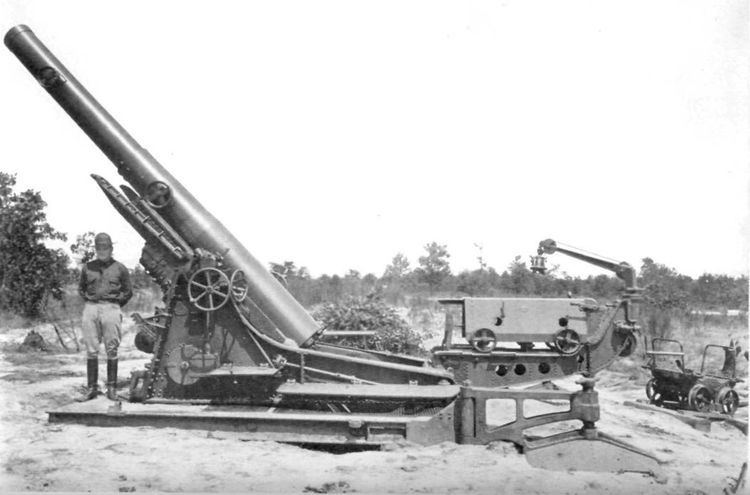In service 1920s–1943 Designed 1917–1920s | Place of origin United States Used by USA Produced late 1920s | |
 | ||
The M1918 240 mm howitzer was a copy of a French World War I siege howitzer, manufactured in the U.S. to specifications of the U.S. Army.
Contents
History
When the United States entered World War I, the U.S. Army had no modern heavy artillery that could be moved by roads. To speed the process of filling this shortcoming, the U.S. Army decided to adopt a foreign design from its Allies for manufacturing in the U.S., and set up a commission for this purpose. The decision was to adopt a 280 mm howitzer produced by the French armament firm Schneider, which was in service with the French Army during the war as the Mortier de 280 modèle 1914 Schneider. However, the U.S. Army wanted the original French cannon in a 240 mm caliber. The Schneider 280 mm cannon actually predated World War I and was originally designed and produced under a contract from the Imperial Russian Army. As requested by the U.S. government, Schneider scaled down their original 280 mm cannon and sent drawings and technicians to the U.S. to set up production as the 240 mm howitzer M1918. The first cannon was not ready for proof testing until 1918 after the war had ended. When firing its first proof shot it exploded, and production was halted while the U.S. Army and Schneider investigated the reason behind the failure and redesigned the weapon. This took until the mid-1920s to complete. It was not until the mid-1920s that production restarted with 330 M1918s being produced. The M1918 became the heaviest mobile artillery piece in the U.S. Army until its replacement, the 240 mm howitzer M1, was introduced in 1943. Although a lot of work was done by the U.S. Army engineers on the M1918 design, it never was considered a suitable cannon, but for lack of funding from Congress, they had to make do with the French cannon design. It is unknown whether any M1918s saw combat service during World War II, but it is unlikely due to its range and vulnerability to counter battery fire. Several examples of the howitzer were present on the Hawaiian Islands, at least 12 on fixed mountings, during the attack on Pearl Harbor.
Description
The M1918 was similar to most mobile siege cannons of World War I. With the exception of the caliber and a few minor details, it was an exact copy of the French 280 mm howitzer. It was moved in four large sections by heavy tracked ten ton tractors. There was also a fifth large load for the erection of the frame and other items needed to assemble the four main cannon components from their specialized transport wagons. The total weight of the five loads was 21.5 tons and was limited to a road speed of only 5 miles per hour. The first load was the 16-1/2 foot cannon barrel, the second load was the recoil mechanism, the third load was the carriage-aiming mount and the fourth the ground base. After a site was chosen, installation began with the handheld-tool digging of a large recoil pit, and then assembly of an iron beam erection structure over the emplacement pit. Under the best conditions, installation required four to six hours.
